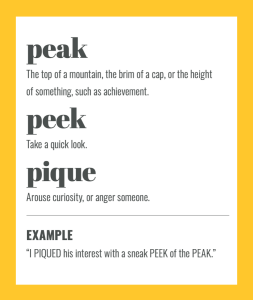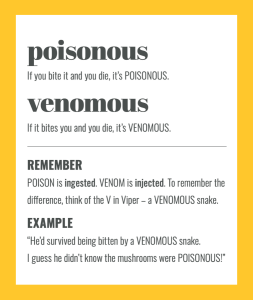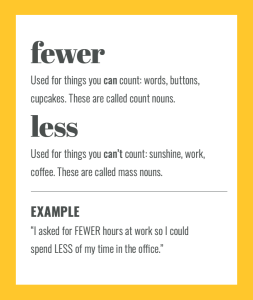Peak, peek or pique: simple tips to remember the difference

Peak vs peek vs pique: do you know the difference? These tips will show you how to use these commonly confused words.
Years ago there was an account on Twitter that automatically responded when people spelled ‘sneak PEEK‘ as ‘sneak PEAK‘.
I’m kinda disappointed it no longer exists (changing the world, one spelling tweet at a time is right up my streat… sorry – street).
But there’s no doubt these tricksy spellings are easy to confuse. Here are my top tips to remember the difference between PEEK and PEAK… with PIQUE thrown in for good measure.
When to use PEAK
It’s easy to remember that the PEAK is the top or pinnacle of something. Just think of the A being like the top of a mountain.
When to use PEEK
A PEEK is a cheeky glance (or peep).
Think of the two EEs in CHEEKY, and the two EEs in PEEK – or like two eyes peeping.
When to use PIQUE
PIQUE means to arouse curiosity, or to make someone angry.
You might do something in a fit of PIQUE, but never ‘a fit of PEEK‘ or ‘a fit of PEAK‘ – though you need to be fit to climb a PEAK (sorry – couldn’t resist).
Get more tips in The Little Book of Confusables
Fun, memorable spelling and usage tips for 600 commonly confused words, packed into 300+ gorgeous pages for just £11.95. You’ll wonder how you managed without it!
2023 GOLD award winner at the eLit book awards.
Poisonous vs venomous: do you know the difference?
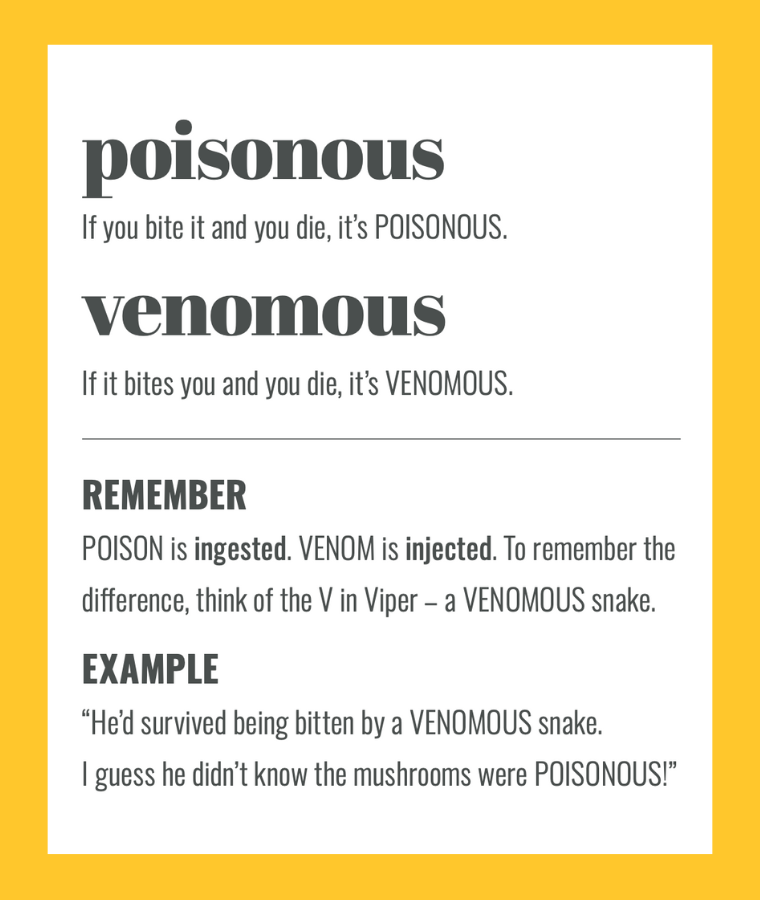
Poisonous vs venomous: wait – don’t they mean the same thing?!
I confess, until I heard someone explain the difference between the two adjectives, I thought they were synonymous.
They’re not!
Hopefully this tip – summed up in the visual below – will help you remember the difference.
You’ve probably heard people describe creatures such as snakes and spiders as POISONOUS: but unless you’re planning to eat them, VENOMOUS is more accurate.
POISONOUS is used to describe something that’s toxic if you ingest it. So, if you bite it and you die, it’s POISONOUS.
VENOMOUS creatures produce poison. If you’re bitten by a VENOMOUS snake, you could die.
(Don’t get me wrong – I have nothing against snakes, or spiders for that matter – I’m exaggerating to make a point, as a stronger mental image is more likely to make the trick stick in your mind.)
Get more tips in The Little Book of Confusables
POISONOUS vs VENOMOUS. Excerpt from The Little Book of Confusables by Sarah Townsend. Get simple spelling tips for 500+ commonly confused words.
Less vs fewer. A simple tip to get it right every time
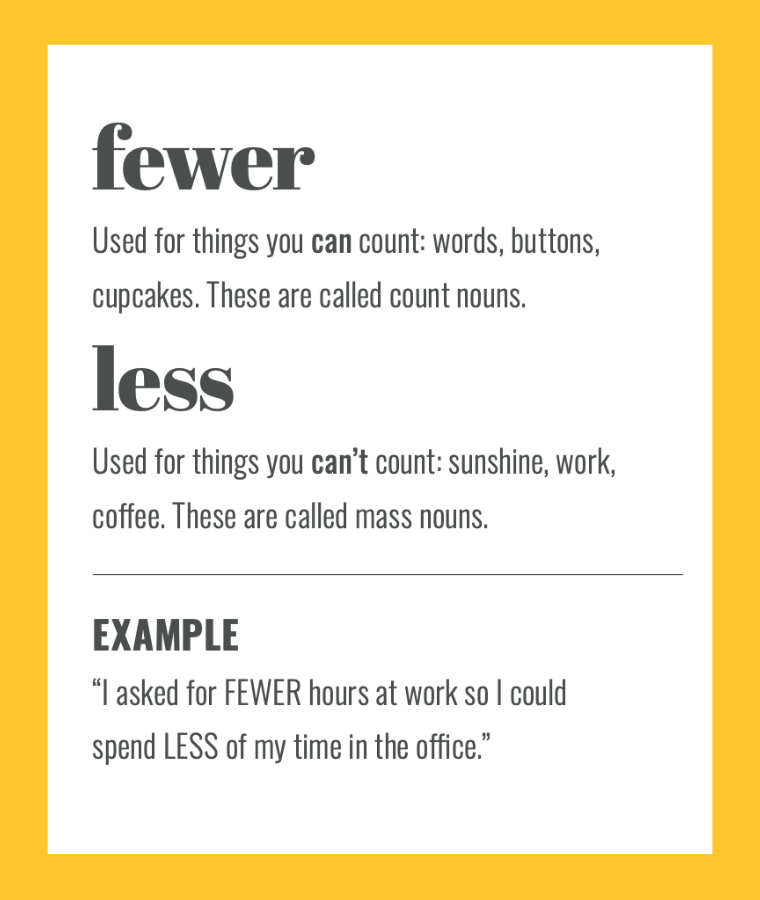
There are two types of people – those who are irritated by supermarket Five items or less signs (Fewer! It should be FEWER!) and those who don’t know the difference. Do you know the super simple tip to tell them apart?
Use LESS for things you can’t count:
- less sunshine
- less work
- less coffee
Use FEWER for things you can count (like the items in your shopping basket):
- fewer words
- fewer buttons
- fewer cupcakes
So there you go. If you can count it, use FEWER. If you can’t, use LESS.
More tips = fewer mistakes + less confusion.
Bonus tip
Once you know that things you can count are called ‘count nouns’ and things you can’t count are called ‘mass nouns’ you can apply the same logic to MANY and MUCH.
Use MANY for things you can count, and MUCH for things you can’t.
For example:
- Using too many words can confuse your message.
- Too much confusion can prevent customers from choosing your business.


